G1 Practice Test – Rules 1
Every Ontario G1 test present on this online site is absolutely free. You can take advantage of them as much as you want. Just like other individuals have already done so, don’t forget to like us on Facebook and tell your friends about APNATORONTO website so that they, too, can pass the Ontario G1 test with grand ease.
ADVERTISEMENT
ADVERTISEMENT
When a streetcar is stopped to take on or discharge passengers where there is no safety zone, what does the law require drivers to do before passing the streetcar?
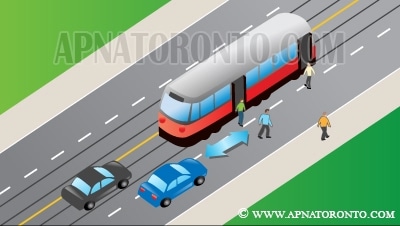
Stop at least two metres behind the rear doors where passengers are getting on or off
Stop behind the rear of the streetcar, then proceed with caution
Sound horn and pass with caution
Pass on the left side when the way is clear
Correct!
Wrong!
When driving with headlights on, in what situations are drivers required to use low beam headlights?
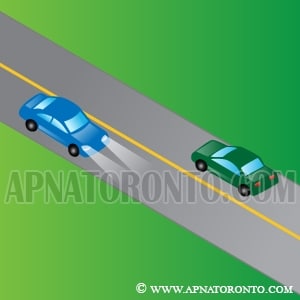
within 150 metres of an oncoming vehicle
within 30 metres of an oncoming vehicle
within 300 metres of an oncoming vehicle
within 50 metres of an oncoming vehicle
Correct!
Wrong!
When towing a trailer or boat, the driver of a motor vehicle is not permitted to carry the following in the trailer or boat:
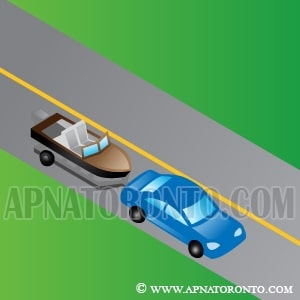
People
Firearms
Flammable materials
Camping equipment
Correct!
Wrong!
Two solid lines painted on the pavement...?
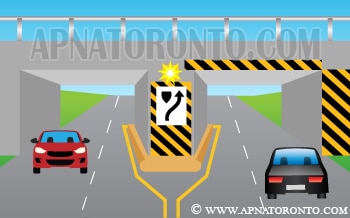
Guide traffic away from fixed objects such as bridge piers or concrete islands
Stop before the lines and yield to pedestrians
It means the lane you are in, is ending or exiting and that you must change lanes
it is unsafe to pass
Correct!
Wrong!
Where there are no posted speed limits, the maximum speed in cities, towns and villages is:
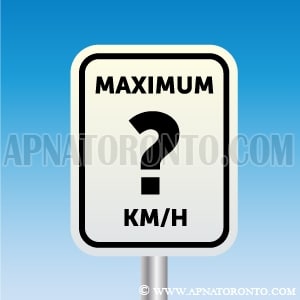
50km/h
30km/h
40km/h
60km/h
Correct!
Wrong!
When a police officer signals a driver to pull the vehicle over:
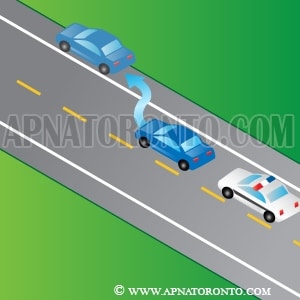
The driver must slow down, pull over as far to the right as safely possible and come to a complete stop
The driver must slow down, pull over as far to the left as safely possible and come to a complete stop
The driver must slow down and stop the vehicle in the driving lane it has been using
The driver must continue driving until the nearest parking lot, signal, pull into the parking lot, and stop
Correct!
Wrong!
Why must a vehicle undergo emission testing?
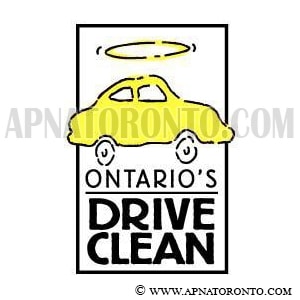
All answers are correct
Because the vehicle registration needs to be renewed
Because the vehicle is past a certain age
Because the vehicle may be grossly polluting the environment
Correct!
Wrong!
When passing a cyclist, allow at least...
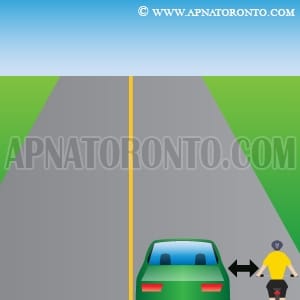
one metre between the vehicle and the cyclist
two metres between the vehicle and the cyclist
three metres between the vehicle and the cyclist
five metres between the vehicle and the cyclist
Correct!
Wrong!
Are drivers responsible for their passengers buckling up?
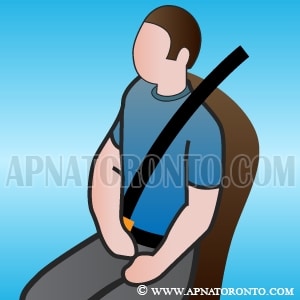
Only if the passengers are under 16 years of age
Only if the passengers are over 16 years of age
Only if the passengers are in the front seat
Only if the passengers are in the back seat
Correct!
Wrong!
High Occupancy Vehicle (HOV) lanes on provincial highways are reserved for vehicles with how many occupants?
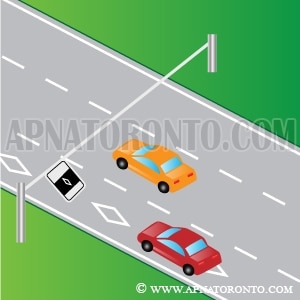
At least two people
3 or more people
4 or more people
Any vehicle that is travelling above the posted speed limit
Correct!
Wrong!
When it is safe to do so, passing other vehicles on the right side
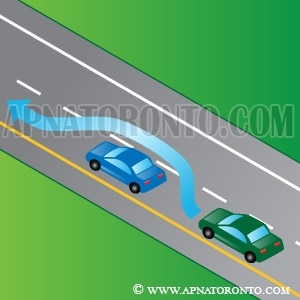
Is permitted when the street or highway has two or more lanes for traffic in the direction the vehicle is traveling.
Is permitted at any time on any street or highway
Is permitted providing it is possible to do so by driving on the shoulder of the road
Is not permitted under any circumstance
Correct!
Wrong!
As you approach the curve....?
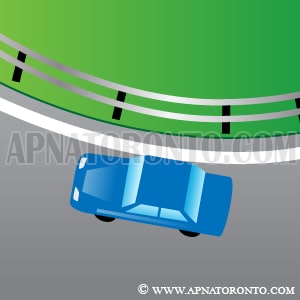
Try to determine the safe speed for it
Speed up
Slam on your brakes
Stop before entering
Correct!
Wrong!
A flashing yellow beacon above an intersection:
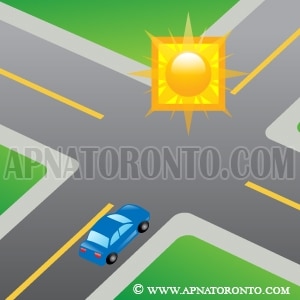
Warns drivers to proceed with caution
Requires drivers to stop if making a right turn
Permits drivers to continue at the same speed
Requires drivers to stop if making a left turn
Correct!
Wrong!
If a signal light changes from green to amber as a driver approaches an intersection, what should the driver do?
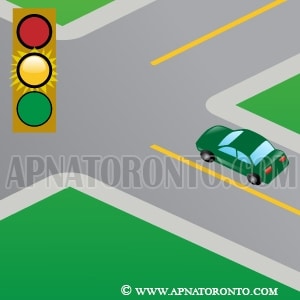
Stop. If stop cannot be made safely, proceed with caution
Speed up to clear the intersection as quickly as possible
Maintain current speed and continue through the intersection.
Sound horn to warn pedestrians and other drivers that the vehicle will travel through the intersection.
Correct!
Wrong!
A white arrow painted on a lane means....?
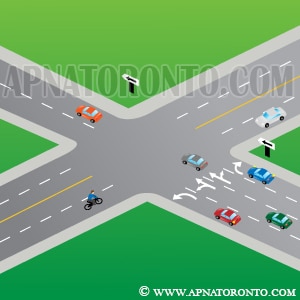
You may move only in the direction of the arrow
Stop before the arrow and yield to pedestrians
Move to the far left or far right lane as soon as the way is clear
It shows where you must stop
Correct!
Wrong!
What lane of traffic should drivers use when they intend to make a right-hand turn?
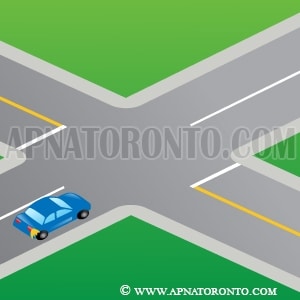
The lane closest to the right side of the road
The lane closest to the left side of the road
The lane closest to the center line of the road
The lane approaching from the left
Correct!
Wrong!
If an emergency vehicle with lights on and sirens sounding is travelling on a street that allows for two-way traffic, what does the law require drivers to do?
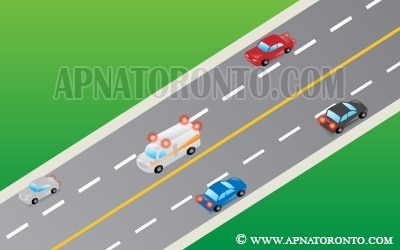
Pull to the right as far as possible and stop
Speed up and get out of the way
Signal the driver to pass
Continue at the same speed
Correct!
Wrong!
In Ontario, there is a seat belt law
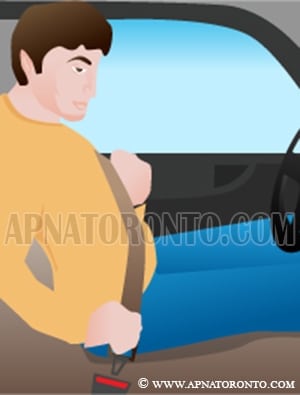
Yes
No
Only when driving on an open highway
Only when driving within a municipality
Correct!
Wrong!
When entering a highway, what must drivers do?
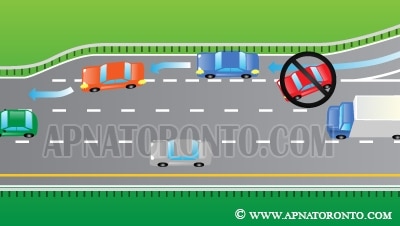
Signal, increase speed and merge smoothly with traffic
Stop on the acceleration lane, wait for an opening, and then enter the freeway rapidly
Slow down, then enter the freeway at a sharp angle
Drive slowly and be prepared to stop for freeway traffic
Correct!
Wrong!
When a right turn against a red signal light is permitted, what does the law require drivers to do before entering the intersection and making the turn?
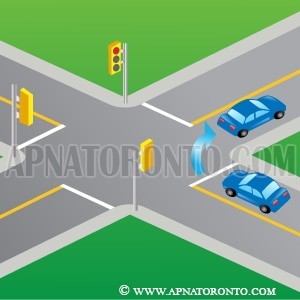
Come to a complete stop, wait until the way is clear, and proceed when it is safe to do so.
Slow down and proceed with caution
Stop, then edge into traffic
Slow down, signal and turn
Correct!
Wrong!
On a roadway where traffic is moving in both directions, in what lane must a driver be before making a left turn?
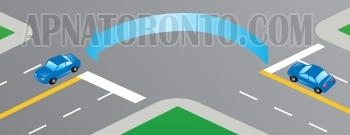
The lane immediately to the right of the center line of the roadway
The lane closest to the right-hand side of the roadway
The lane closest to the left-hand side of the roadway
The lane does not matter provided the driver signals
Correct!
Wrong!
Who has the right-of-way over all others at an intersection when the light is green?
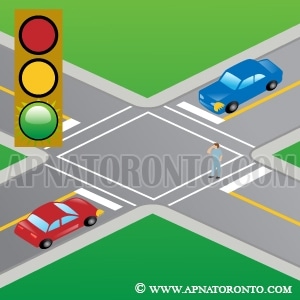
Pedestrians crossing with the light
Pedestrians crossing against the light
Drivers turning right
Drivers turning left
Correct!
Wrong!
A person whose driver licence is under suspension, may
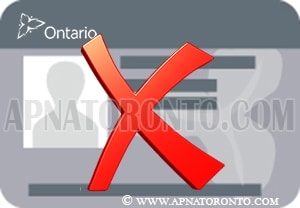
not operate a motor vehicle under any circumstance
operate a motor vehicle in the case of an extreme emergency
operate a motor vehicle to and from work
operate a motor vehicle when accompanied by a licensed driver
Correct!
Wrong!
Which driver has the right-of-way in a roundabout?
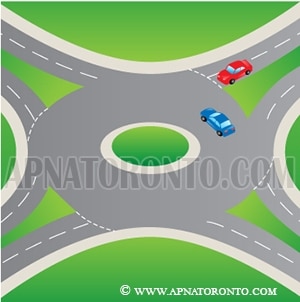
A driver already in the roundabout
A driver approaching the roundabout
A driver turning right into the roundabout
A driver turning left into the roundabout
Correct!
Wrong!
When does the law require lights on vehicles to be turned on?
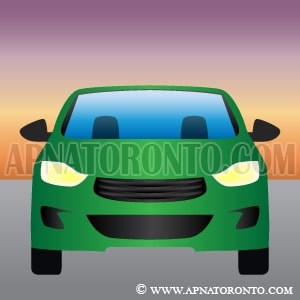
Between half an hour before sunset to half an hour after sunrise and at any other time visibility is not clear for a distance of 150m
Between sunset and sunrise
Between sunset and sunrise as well as any other time visibility is not clear for a distance of 150m
No specified time
Correct!
Wrong!
When the traffic signal light facing a driver is red and the driver intends to go straight through the intersection, what must the driver do first?
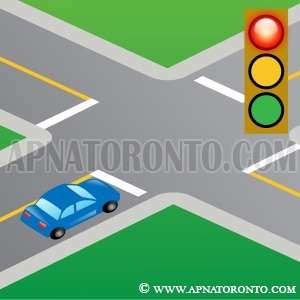
Stop, wait until the light changes to green and the intersection is clear before moving through it
Stop, give pedestrians the right-of-way, then proceed with caution
Stop, proceed when the way is clear
Slow down, proceed when the way is clear
Correct!
Wrong!
How many meters in both directions must drivers be able to see in order to make a legal U-turn?
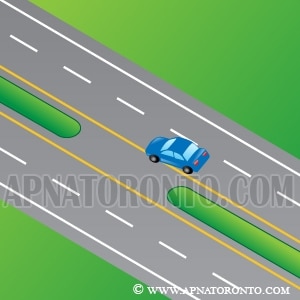
150 metres
50 metres
250 metres
100 metres
Correct!
Wrong!
When arriving at an intersection which has no stop line, crosswalk or sidewalk, where must drivers stop?
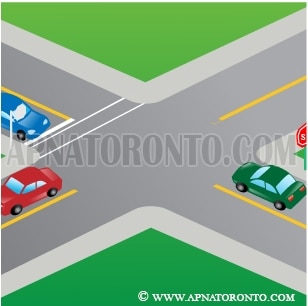
At the edge of the intersection
Right beside the stop sign
Right before the stop sign
A little into the intersection
Correct!
Wrong!
When parked facing uphill with a curb:
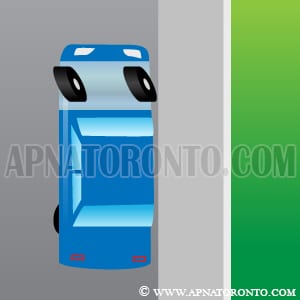
Turn the steering wheel to the left
Turn the steering wheel to the right
The front wheels must be parallel to the curb
The direction of the wheels doesn’t matter as long as the parking brake is set
Correct!
Wrong!
Upon approaching a stop sign, what does the law require drivers to do before entering the intersection?
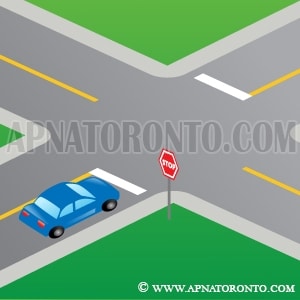
Stop, and when it is safe to do so, proceed
Slow down, sound horn and proceed
Slow down and if the way is clear, proceed
Stop, sound horn, then proceed
Correct!
Wrong!
When lights are required, drivers must use low beam headlights when following another vehicle within what distance?
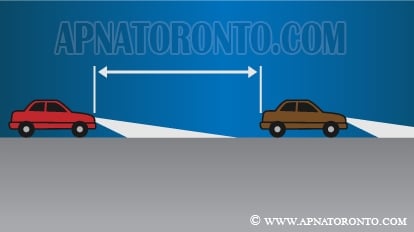
within 60 metres
within 30 metres
within 120 metres
within 100 metres
Correct!
Wrong!
Why must drivers use signals when turning?
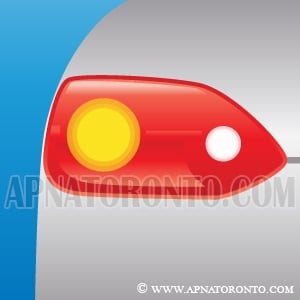
All answers are correct
To notify oncoming traffic of their intention
To notify drivers behind them of their intention
To notify pedestrians of their intention
Correct!
Wrong!
If a driver is caught driving with a blood alcohol concentration (BAC) from ----------------, the police can immediately suspend the driver’s license up to three days for a first occurrence.
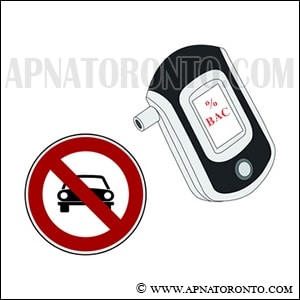
0.05 to 0.08
0.08 to 0.10
0.07 to 0.08
0.08 to 0.18
Correct!
Wrong!
If two vehicles arrive at an uncontrolled intersection at approximately the same time, the right-of-way should be given to:
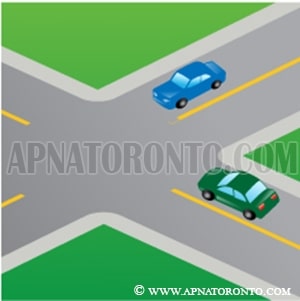
The vehicle approaching from the right
The vehicle approaching from the left
Neither one
The one moving faster
Correct!
Wrong!
In what lane must drivers be before making a left turn from a one-way street?
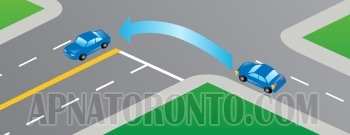
In the lane closest to the left-hand side of the roadway
In the lane closest to the right-hand side of the roadway
In the lane closest to the center line of the roadway
The lane does not matter provided the driver signals
Correct!
Wrong!
Upon approaching a Yield sign, what does the law require drivers to do?
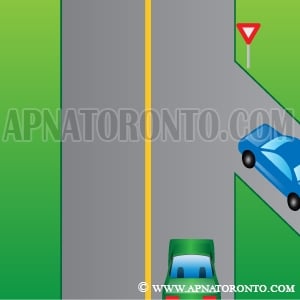
Slow down, stop if necessary, and proceed only when the way is clear
Stop, then enter oncoming traffic slowly
Stop, then enter oncoming traffic quickly
Speed up and force their way into oncoming traffic
Correct!
Wrong!
When may drivers pass on the right shoulder?
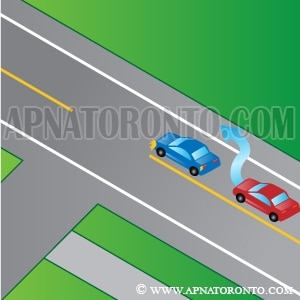
Only when passing a vehicle turning left and only if the right shoulder is paved
Whenever it can be done safely
At any time a vehicle is turning left, even if the right shoulder is unpaved
Never
Correct!
Wrong!
If your phone rings while driving:
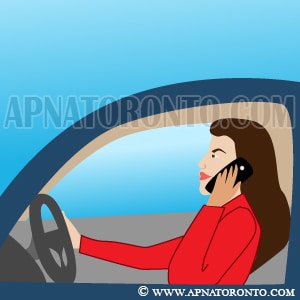
All answers are correct
Pull over and park to use your cell phone
Have a passenger take the call
Let it go to voice mail
Correct!
Wrong!
When must drivers stop for school buses on roads with a median?
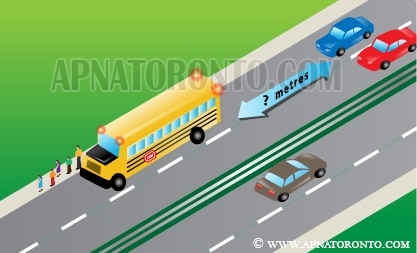
When behind a stopped bus which has its upper red lights flashing
Every time the bus stops
There is no need to stop on roads with a median
Upon every approach to a school bus
Correct!
Wrong!
A flashing red beacon above an intersection means:
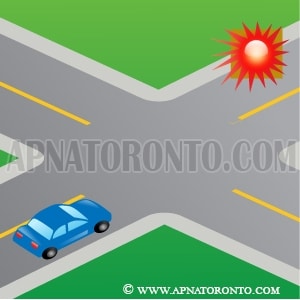
Drivers must come to a complete stop and move through the intersection only when it is safe to do so
Slow down and drive with increased caution
Slow down and if necessary yield right-of-way to vehicles approaching from the left or right
Signal light is out of order, proceed with caution
Correct!
Wrong!
Share the quiz to show your results !
Subscribe to see your results
G1-Rules1
I got %%score%% of %%total%% right
%%description%%
%%description%%
Loading...
ADVERTISEMENT
